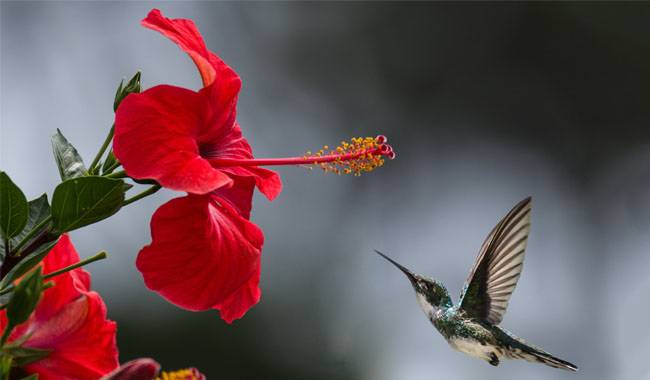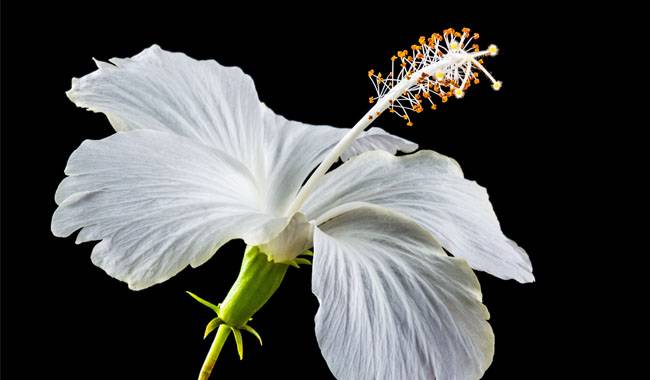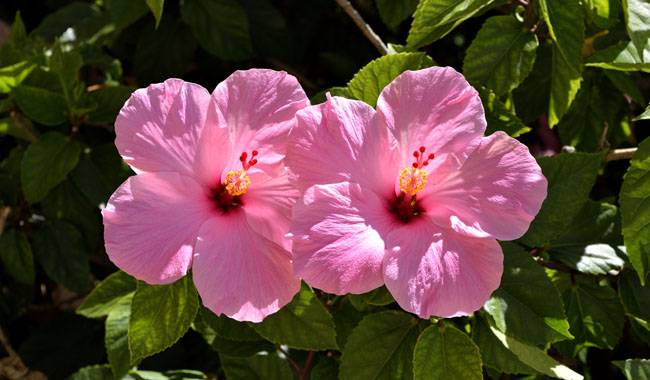
In recent years, Hibiscus Chinensis has undergone a remarkable transformation. Hibiscus has evolved from a dull plant that adorned the halls of hospitals and schools to a true garden and indoor star. Despite the beauty of its corolla, Hibiscus is appreciated because of the delightful flower color of new cultivars. The flowering period of Chinese Hibiscus usually lasts for a long time. But not everyone can achieve the unstoppable effect of Hibiscus, sometimes without even a few flower buds. However, if Hibiscus does not bloom, you should always look for reasons for your own mistakes. You will learn how to grow Hibiscus flowers in ThumbGarden’s article.
HOW LONG DOES HIBISCUS TAKE TO BLOOM?
Hibiscus blooms for almost the entire year, being forced to stop in winter due to lack of light. In ideal conditions and without improper care, Hibiscus will produce attractive maroon or plain, bright, spotted “phonograph” flowers from February and March through October. Crown-shaped flowers, up to 4 inches (10 cm) in diameter, open one after another in just a few days.
Hibiscus can be cultivated at heights of 20 inches (50 cm) to 80 inches (2 m) by pruning into compact shrubs, stumps, and trees. The ovate leaves with their serrated edges are fresh and rustic and contrast perfectly with the flowers. Hibiscus is even selected for its flowering characteristics, and more and more people are choosing modern hybrids which can flower for a long time and in large numbers. How frustrating it would be if Hibiscus did not flower at all or only flowered.
The answer to the question “Why doesn’t Hibiscus bloom?” The answer to this question is always straightforward because of our mistakes. This plant is not the most capricious, but it is not the hardiest either. And it does not bloom in all locations or under all types of care. Hibiscus has many requirements. And they start with the right choice of location.

POT AND SOIL PROBLEMS
Hibiscus plants will not flower if the pots are too crowded and the roots take up the entire substrate with no room to develop, or if the containers are too large and root development interferes with growth and flowering. For this reason, it is very important not to transplant randomly, but when the shrub needs it, increase the container by 2 inches (5 cm) at a time.
If the pot is much larger than the size of the root mass, or conversely, the plant forgets to transplant, it is best to correct its mistake as soon as possible. And in years when transplanting is unnecessary, it is best to remember to replace the topsoil in the pot in early spring.
Hibiscus plants will not thrive in shallow containers: they need classic pots taller than their diameter and have good drainage holes. And a material that is stable enough to support the plant’s lush canopy.
In addition to transplants and the wrong pots, non-flowering can also be due to
- Soil compaction, lack of drainage at the bottom of the container, or incorrect choice of substrate – not loose and breathable enough, without added loosening agents in the form of perlite or at least coarse sand (including the use of low-composition soil mixes, pure peat or vegetable garden soil)
- The pH of the substrate is not between 5.5 and 6.0 (the soil is too acidic or too alkaline)
- Planting is not timely and too late (preferably transplanted in February, before Hibiscus starts to grow or when the first signs of vegetation appear).
- Roots are entirely bare, and if the plant does not need to be salvaged, Hibiscus should be transplanted more carefully, keeping the root ball intact.
Problems cannot be avoided if the newly transplanted Hibiscus is not given a period of acclimatization, placed in direct sunlight, hot, dry air, overwatered or not watered at all, in short, not allowed to acclimate to the new pot under very mild conditions (no extreme conditions).
LIGHT AND TEMPERATURE ISSUES
Hibiscus is a light, heat, and air-loving plant. And its lack of flowering is often due to poor site selection that does not give the shrub enough access to all three key “resources.”
Hibiscus does not bloom in the shade. If a shrub does not get enough light, even the few flower buds are likely to fall off. the place where Hibiscus stands should not be very different from a western or eastern windowsill. If there is any sign of a lack of light, the shrub should be moved immediately – as close to the window as possible. Or give it extra light.
Light plays a crucial role in winter. Therefore, the light should be as high as possible despite rest periods and lack of growth, preferably close to the usual summer regime. If the shrub is not moved to a bay window or a south-facing window in late autumn, or if additional light is not arranged, Hibiscus may not flower even if other measures are taken (especially if the temperature does not drop sufficiently).
Flowering can also be affected but is usually already “in progress” and burned by direct sunlight. Hibiscus prefers diffused soft light and is severely affected by midday light, and its flowering period can be shortened.
Don’t underestimate Hibiscus’ love of fresh air, either. On its own (alone), this factor does not cause under-blooming, but when combined with any other factor, it can exacerbate the problem. The air around the canopy and clumps should circulate freely, the plants should breathe, and ventilation is necessary, careful not to over cool. If there is an opportunity to expose Hibiscus to fresh air during the summer, it should be taken advantage.
Hibiscus plants should not be moved, if at all, during the germination stage. They do not tolerate drastic changes at any time of the year and need to be gently acclimated by increasing humidity and slow rotation. It is a tender plant that does not like rotation, sudden temperature changes, or ventilation when in flower.
HIBISCUS PLANT OF IMPROPER DORMANCY AND WINTER CARE

Hibiscus plants respond by dropping their leaves when temperatures drop below 59 °F (15°C). However, the ideal overwintering temperature should be 39-41 °F (4-5 °C) lower than during active growth. Winter temperatures of 59-64 °F (15-18 °C) are the best guarantee of an abundant flowering period.
If the conditions in the house are very different from the ideal, this does not mean that Hibiscus will not bloom at all. But the plant cannot simply be placed in a warm room: during the hot overwintering period, it needs as much bright light as possible, preferably – additional lighting up to 12-14 hours of light and high air humidity. If Hibiscus still does not bloom, the plant is not fully compensated for the winter because the temperature is incorrect.
For Hibiscus to bloom in principle, the plant’s signals should not be ignored in winter, and the basic rules of care should be carefully observed during the dormant period.
- If Hibiscus continues to flower in winter, during this period fertilizer should be reduced by 3 or 4 times, if flowering stops – completely (fertilization should be resumed only after starting to grow if transplanting is carried out 4-5 weeks after transplanting)
- Reduce the substrate humidity by 2 to 3 times, with light predominantly, and dry the soil to one-third to one-half between waterings, still not allowing it to dry completely, but not overwatering either.
- Maintain air humidity at 60-70%.
- Protect the plant from heating and air conditioning equipment.
- Keep the leaves clean, do not allow dust to accumulate, and do not forget that Hibiscus likes warm showers or leaf washing.
- Check the condition of shoots, leaves, and substrate regularly. Spider mite or aphid proliferation will inevitably affect flowering. Pests can be controlled with biocides and insecticides, but the most significant damage to Hibiscus health comes from rot, which can occur if the soil is too wet and overwatered.
Any violation of these rules can result in your Hibiscus failing to bloom. Particularly dangerous are over-watering, complete drying of the soil, heavy fertilization, and proximity to radiators.
In the hot winter months, spray cans are suitable to increase humidity. They can continue until the buds begin to set. But as with any stage of development, it is best to install a humidifier. With Hibiscus, you don’t need to buy specialized equipment; water in a container, damp cloth on the radiator, or a simple but effective extra tray of wet peat, expanded clay, or pebbles will do the trick.







